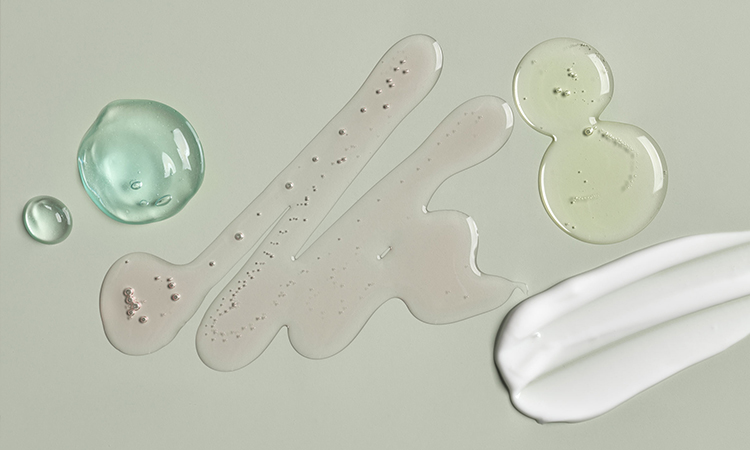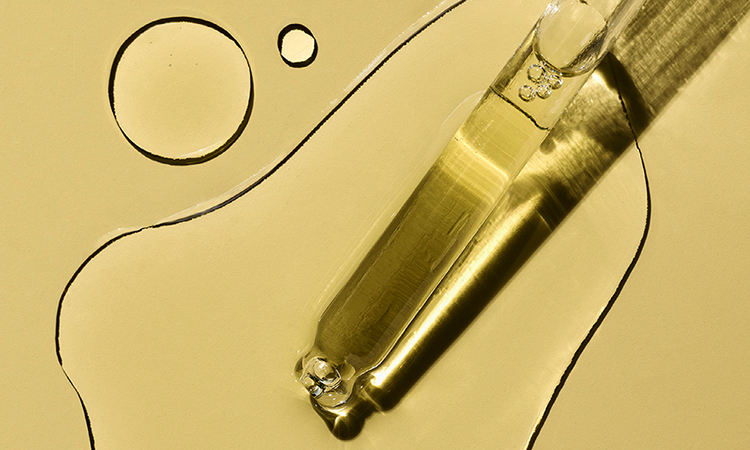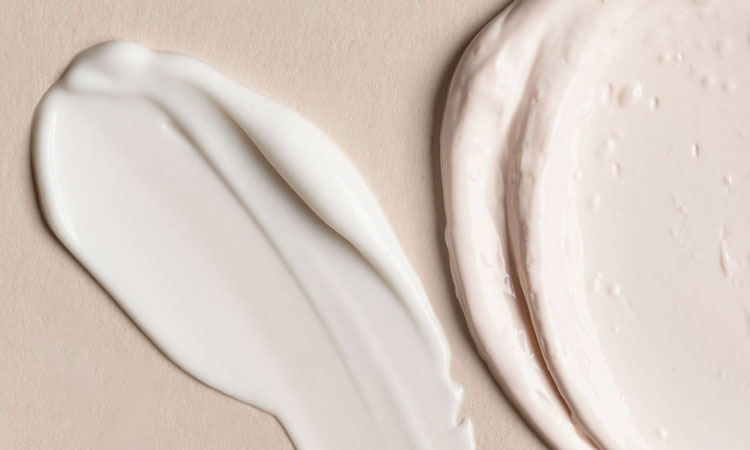We asked skin experts the question we wonder every time we buy a new skin care product or add a step to our routine: In what order should I apply my skin care products, and does it matter? Turns out, it does!
Read on for the details or skip right to the summarizing infographic: The Best Order for Your Skin Care Products
Why the Order of Your Skin Care Routine Matters
According to Dr. Heather Rogers, a board-certified dermatologist and dermatologic surgeon, applying your skin care products in the proper order ensures that your skin receives the full benefits of each product.
“The order of application is incredibly important,” says Dr. Rogers. “The skin’s job is to keep things out, but many of the skin care products we use have ingredients we want to get in. Only a very small amount of these key ingredients can penetrate the skin, even when perfectly formulated and perfectly applied. If you don’t apply products in the correct order, you will not see the best results from your skin care regimen.”
The Basics of Any Skin Care Routine
Aside from the order of application, some experts believe it’s also important to consider the time it takes for your skin to absorb your products. However, since most of us are often in a rush to get somewhere (or hit the sack), Dr. Rogers understands that this isn’t always possible. Her advice? Keep your skin care routine simple.
“Many products say you have to wait anywhere from five to 30 minutes before the next step to ensure proper absorption, but who has time for that? If you make it too complicated, you just won’t do it,” says Dr. Rogers. “If you have many steps, pause for a bit (a minute) to allow each product time to react with the skin. For example, at night, after I wash my face and apply my serum or evening treatment, I just wrap up my day and get into bed. I keep my moisturizer on my bedside table and apply it right before I go to sleep to give these typically expensive, specialty treatments a touch more time to penetrate the skin before I seal them in with my cream.”
Another piece of advice? Listen to your skin. Remember that you are unique and that nobody else has your skin. No matter what experts say, it’s important to find what works for you and always be kind to your skin.

How to Layer Your Skin Care Products, Plus Why Order Matters
So which product goes on top of what, you ask? An easy rule of thumb to follow is to apply your products with the thinnest consistency to thickest, or from liquid to cream. “In general, think thin-to-thick, but you also want to first use the products with the ingredients that are most important to penetrate into the skin (like antioxidants in serums) and finish with the products that need to sit on top of the skin (like emollients and humectants in moisturizers),” says Dr. Rogers.
Your Daytime Skin Care Routine: A Step-by-Step Guide
The morning routine is all about protection from the sun, pollution and the elements, according to Dr. Rogers, so leave your peel pads and treatment products, like retinol, for night.
STEP 1: CLEANSER
In the morning, start by splashing your face with warm water or, if you must, wash with a gentle face cleanser designed for your skin type.
Learn more: The Different Types of Face Cleansers
S
STEP2: TONER
Most people choose to skip toners, partly because there’s a lingering assumption that most toners are harsh and irritate the skin. Fortunately, that’s not the case anymore. While they don’t physically “shrink” pores, the new breed of toners can serve multiple purposes, like act as a delivery system for antioxidants, vitamin-B derivatives and even toning acids. Additionally, each type of toner is intended for a different skin issue, so it’s important to use the right kind for your skin concern.
However, if you have lived all your life without using a toner and your skin looks healthy, Dr. Rogers says there is no need to start using one. “Toners were created to help return the skin’s pH after it became too basic from harsh soaps,” explains Dr. Rogers. “Face cleansers are now so much better balanced that toners are not a required step for me.” That said, if you have a toner that you like using, there’s no harm in sticking with it.
Learn more: The Best Toners for Oily and Combination

STEP 2: ANTIOXIDANT SERUM
Serums are super-concentrated, nutrient-dense treatments that address specific concerns, so it’s better to keep them as close to the skin as possible. There are various serums available on the market today, but for daytime, Dr. Rogers recommends antioxidant serums, which provide a variety of benefits—from blunting your skin’s inflammatory response to neutralizing damage from UV rays and environmental pollutants.
Learn more: Antioxidants in Skin Care: How Do They Work and Which Ones Are the Best?
STEP 3: EYE CREAM
According to Dr. Annie Chiu, a board-certified dermatologist, it’s vital to apply an eye cream at least every night—if not twice a day—starting in your 20s. “It’s about maintaining the health and thickness of the eyelid skin. Improving the skin quality in this area early on ensures that the eyelid skin does not easily lose laxity and its smooth appearance later on.”
For best results, consistency is key. “Regular use of eye cream over time will keep the eyelid skin elastic and can improve or prevent against some fine lines or collagen loss. Remember: Nothing is magic. Results don’t occur overnight,” Dr. Chiu adds. “You can further protect the delicate skin around your eyes by choosing an eye cream with SPF or applying sunscreen every day.” Dr. Chiu also advises people to remember to wear sunglasses when outside to protect against UV-light damage and lines that can creep up around the corners of your eyes from squinting.
Learn more: The Best Eye Creams for Your Under-Eye Con
As acne spot treatments differ in active ingredients, check your product packaging or consult your dermatologist for the best way to apply it. Prescription-strength benzoyl peroxide, a common acne spot-treatment ingredient, has a one-to-three-hour working time, according to esthetician and acne specialist Ashley Wiley. “Any cream that comes in contact with it before it has completed its work will likely inhibit the active ingredient from working properly.”
Remember that acne spot treatments can dry out your skin, so always apply only on spots where you need it.
Learn more: The Best Products to Get Rid of Pimples, FA

STEP 3: MOISTURIZER
Yes, everyone needs a moisturizer, even if you have oily skin. “Even though your body has its own natural lubricating system consisting of glands that secrete oil (or sebum) to maintain a protective coating against harsh outside conditions and infections, most of us do need extra hydration after the havoc that sun, weather and harsh chemicals wreak on our skin,” explains Dr. Sandra Kopp, a board-certified dermatologist.
Most experts recommend that the best time to apply a moisturizer is while the skin is still damp, so the sooner you go through applying your serum and treatment, the sooner you’re able to lock in much-needed hydration with your moisturizer.
If you’re using an acne spot treatment, you may want to skip those areas when applying your moisturizer to make sure the ingredients in it won’t interfere with the active ingredients in your spot treatment.
Learn more: The Best Moisturizers for Your Skin Typ
Dr. Rogers explains: “Chemical sunscreens have to be absorbed into the skin to be effective, so applying after your moisturizer will delay and hinder that. However, if you apply your chemical sunscreen before your moisturizer, your moisturizer will not work as well either because the skin is coated with chemical sunscreen.”
To get around this, Dr. Rogers recommends using a physical sunscreen with zinc and to apply it after your moisturizer. “Zinc is safe, effective and provides the broadest protection against UVA and UVB rays.”
As for those who like using chemical sunscreens, try to look for a formula that offers moisturizing benefits, so you can get your daily hydration needs while protecting your skin.




Alphonsus Odumu 3 w
Skin care guide